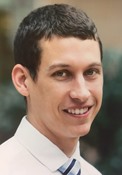Program Information
Long Term Quantification of Parotid Volume After Head and Neck Radiotherapy
D Fried*, B Chera , S Das , University of North Carolina, Chapel Hill, NC
Presentations
TU-C2-GePD-J(A)-3 (Tuesday, August 1, 2017) 10:00 AM - 10:30 AM Room: Joint Imaging-Therapy ePoster Lounge - A
Purpose: Patients receiving IMRT for head and neck cancer frequently experience dry mouth (xerostomia). Xerostomia peaks immediately after radiotherapy (RT) and recovers out to two years post-RT. It is known that parotid glands shrink during IMRT for head and neck cancer, however there is little data regarding parotid volume recovery post-treatment. We hypothesized that parotid volumes recover in a dose dependent fashion and that this quantitative volume measurement could be used as a surrogate marker for xerostomia recovery.
Methods: We quantified parotid volumes using follow-up diagnostic CT scans in 10 patient receiving de-intensified (60Gy) RT for oropharyngeal cancer at various time points post RT: 0-3, 3-9, 9-15, and greater than 15 months. Fractional volumes were calculated compared to baseline (volume on treatment planning CT) and stratified based on the average dose received by each parotid gland (great than or less than 26Gy). The 26Gy cut-off was used as it is the clinical constraint at our institution for sparing and is a common value in the literature for parotid sparing.
Results: Regardless of dose received, parotid glands shrunk post-RT to approximately 50% of their pre-RT volume. Qualitatively, glands receiving greater than 26Gy did not demonstrate volume recovery while glands receiving less than 26Gy on averaged demonstrated increasing volume out to greater than 15months post-RT. At greater than 15 months, glands receiving 26Gy were found to be 53% of their pre-RT volume while glands receiving less than 26Gy were found to be 68% of their pre-RT volume (p = 0.067).
Conclusion: Parotid glands receiving less than 26Gy showed increases in volume post-RT while glands receiving greater than 26Gy did not. While increasing patient numbers are needed, this data provides preliminary evidence that parotid gland volume may recover in concert with xerostomia symptoms and could be used a surrogate for radiation toxicity post-RT.
Contact Email:
